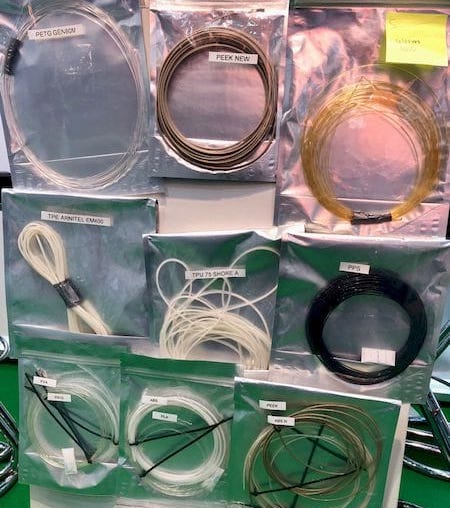
There has never been a better time to buy 3D printer filament. Why would you make your own?
At this point in 3D printing history, the lowest pricing of 1kg spools of typical thermoplastics is common. I’ve seen 1kg spools of PLA and ABS sell for USD$15 or lower, and these are often of good quality.
There’s also more choice than ever before. Only a few years ago a typical vendor of 3D printer filament would boast of their many brilliant colors of PLA, and their extensive selection of ABS shades. Perhaps there were some translucent materials, or color-changing versions. Some even marketed filaments made from coconuts, coffee or even algae.
Those were the days.
Now a visit to almost any reputable 3D printer filament vendor shows a myriad of different materials, well beyond mere PLA and ABS. You’ll find PC, Nylon, ASA, PEEK, ULTEM, PP. You’ll find a menagerie of filaments reinforced with carbon fiber, glass, stone, brass, copper, stainless steel and many more substances. You’ll find even more exotic materials that are unusual formulations from big chemical companies.
The reason for this change is the shift in the market from consumers towards professional use. And those professionals require many different materials to prepare prototypes. Engineers need materials with properties that match the physical requirements for the parts being produced. Their needs have vastly expanded the product shelves on many filament vendors.
So why, then, would one ever consider making their own filaments?
There is a reason, and it’s a good one.
If you have a filament production machine, such as the very good quality unit from 3DEVO, you can produce your own filament in a desktop office environment. But you likely won’t be making the same materials you can buy from the usual vendors.
No, you’ll be experimenting with your own thermoplastic combinations. By obtaining pellets of materials still unavailable by filament vendors, you can produce 3D printer filaments that no one else has. You can find a thermoplastic that (hopefully) perfectly matches your requirements and give it a try without having to commit to a large order.
It’s a way to efficiently experiment with different, unavailable thermoplastics.
You won’t find many filament production systems at consumer sites, but you will be finding them in increasing numbers at professional 3D printing workshops.

